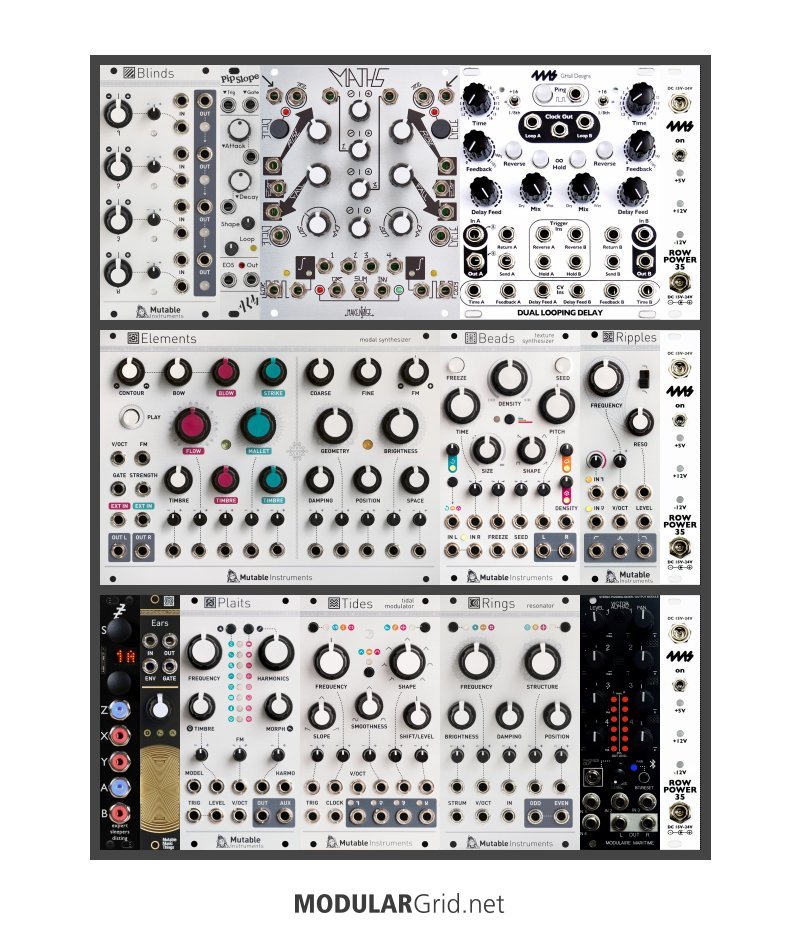Hey there,
The single most important thing to do before you build a modular synth system is to understand what it is that you're wanting to create. Sure, you've identified that you want to go ambient, but that's a very wide field ranging from Eno and Harold Budd all the way over to Nine Inch Nails, with stops at the houses of Philip Glass, Deep Forest and even Scraping Foetus along the way. With modular, you can spend a ton of money on equipment and not get what you're after. Do you want sweeping and moody pads? Are you after environmental sounds? Are drums needed? Plonky tubular skindrum sounds of the rainforest? Do you just want to write the next "Music To Get Stoned To" album, or is your writing melodic, formative, free-form or accidental? There are no wrong answers, but those answers will help guide you to deciding which modules and/or equipment makes the most sense to accomplish your goals. Remember that music is made from instruments and you just need to choose which instruments, modular synths or otherwise, will best speak your language.
Let's talk about your rack. In general, I think you're in the right direction. Maths is excellent, and it will help you manage some interesting drones, but I strongly encourage you to learn about what Maths is and isn't. Think of it as a superutility. Its strengths are in mathematically dividing, flipping and tweaking existing signals. Here's a great overview of Maths and what it can do: https://alijamieson.co.uk/2016/11/02/make-noise-maths-beginners/.
I'm a fan of Mutable Instruments, so much so that I own nearly all of them (except, actually, Marbles...I did for a while but ended up selling it as I have other modules that do a similar thing. Also, Marbles is a CV utility, really. It's similar to Maths in the sense that it manipulates control signal, and has some clock abilities, but it's not a voice, per se. Rings is quite good and its strength is as a ring modulator, so I wouldn't call it a "warm and fuzzy" filter. Beads and Tides are excellent—truly two of my fav modules from MI. Beads can be pushed into delay and S&H territory very easily, freezing an input signal for use as a repeating grain. Behringer has made an attempt to copy (as they do) these modules and I can't say how well they've done it as I've not used them. If cost is a concern, then Behringer certainly is one way to go, but I encourage you to do your research first, comparing the actual modules that they've copied. Nearly everyone has copied MI's modules. How well they've done the work is the real test. I can't say that Behringer has always done a great job, and there's something separate to be said about a company that just steals other engineer's ideas and copies them, but they are definitely the least expensive.
You're absolutely going to want good filters and a way to shape them across the time vector. Envelopes and LFOs are your tools of choice here. Be sure you have at least one LFO, preferably two or more, that you can patch into the envelopes and VCOs. Take a look at NANO's Quart (a quad LFO/EG) and the Xaoc Zadar, an EG/Function Generator.
Keep in mind also that, as a basic start, you're going to want several VCOs. Not just one or two but maybe three or more. This will give you the opportunity to set a few offset from each other to create droning or playable chords. You'll need VCAs to work in conjunction with your EGs. You'll also need a decent effects stage, whether that's modular or using good outboard gear or pedals. Finally, you'll need a good way to get audio out of your rack. You may also want to consider panning your signals to the stereo field, which is essential for really good ambient richness.
Just be sure that you understand what the modules are capable of before you buy them. There's nothing worse than spending a lot of money and realizing that the modules aren't doing what you expect them to. Be sure that you visit the manufacturer's websites for every module you are interested in, or go to youtube and see if there are any example videos that you can listen to. Make sure you listen to as many as possible so that you get a clear picture of the sonic capabilities of each module.
All this can cost a bundle, so it's important to ask yourself whether you can find a synth that can achieve the same result for the same price or (more likely) much less. For example, if you're going for ambient pure and simple, maybe consider an Oberheim OB-6 and a Strymon Blue Sky delay pedal and you're off to the races in style!
I encourage you to explore VCV, the software module building tool. It's a wonderful way to explore modular synthesis and experiment and learn without spending the thousands of dollars that you easily can do with this stuff.
Hope the info helps.
Finally, as I mentioned, I have a separate rack dedicated to MI modules and I find that I use it almost entirely for ambient, percussive and environmental sounds. It wasn't cheap to build this one (remember that you'll need cases and power supplies), but I'm glad I have it in my studio for when I'm feeling the need for such soundscapes. Check it out here:

"I'll just plug this in here and see what happens."

